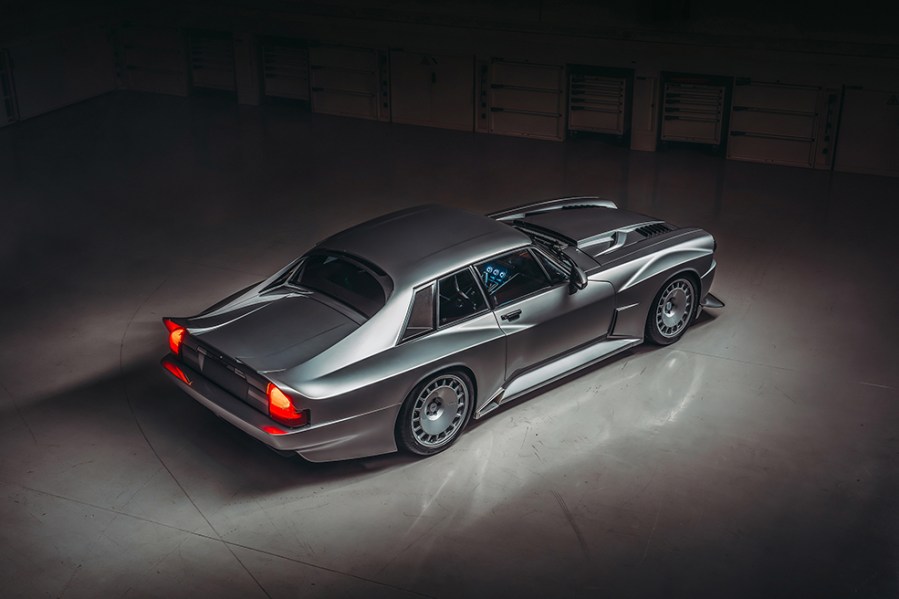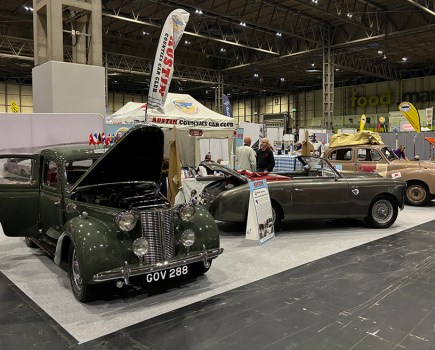The TWR Supercat takes the Jaguar XJS and turns it into a firebreathing 660bhp V12 supercar. Here’s the full story
TWR – the Berkshire firm established in 2020 by Tom Walkinshaw’s son, Fergus Walkinshaw – has revealed its new restomod Jaguar XJS called the Supercat. The business is a separate entity to the original Tom Walkinshaw Racing of the 1980s and 1990s, but has revisited the original company’s long and fruitful association with Jaguar by selecting the XJ-S as the platform for its first offering.
The Supercat will be strictly limited to 88 individual builds – a number chosen to celebrate the 1988 Le Mans win in the TWR Jaguar XJR-9. Penned by renowned designer Khyzyl Saleem in collaboration with car collector and fellow designer Magnus Walker, the Supercat retains the silhouette of the Jaguar XJS, but every exterior panel has been re-sculpted in carbon-fibre reduce weight and drag while boosting rigidity.
The car makes references to iconic cars like the Jaguar XJ220, XJR-9 and XJR-15, and although the wide-body looks may prove to be divisive among aficionados, staple XJS features like the overall profile and rear buttresses remain. The car’s bold new look is set off by staggered forged 18/19in alloy wheels; 275/35 tyres are fitted at the front, with 325/30 items on the rear axle.
Power comes from a Jaguar V12 engine tuned to produce 660bhp at 7,600rpm, with 730Nm of torque at 5,350rpm; performance figures have not been announced but these numbers suggest supercar-rivalling acceleration and speed. TWR’s desire to achieve a “connected and analogue driving experience” means a six-speed manual gearbox has been chosen. TWR says the Supercat is also 9.3 per cent lighter than the standard XJS, weighing in at 1,605kg vs the original’s 1,770kg.

TWR-designed double-wishbone suspension – mounted on bespoke tubular subframes – is fitted along with active dynamic dampers which are adjustable for road or track use, while 12-level programmable ABS, five-level traction control and a limited-slip differential help keep things under control. The standard car’s four-pot front and inboard rear brakes are replaced by vented six- and four-pot items respectively, with the option for carbon ceramic discs.
Inside, the Supercat builds on the base car’s GT credentials with sumptuous leather trim, a choice of carbon-backed seats, and an expanded luggage area in place of the rear seats. A digital dial setup incorporates Apple CarPlay and Android Auto while also allowing for suspension and steering setting changes, along with selection of five different drive modes.
The Supercat is due to make its first public appearances this summer, when its re-imagined interior will be unveiled too. As you might imagine, however, this is not going to be a cheap car. Pricing will vary depending on individual specifications, but will start at £225,000 excluding local taxes. Build slots can be secured with a £10,000 refundable deposit, with the first deliveries to take place in the fourth quarter of 2024.
“Almost 40 years after my father’s original company dominated the racetrack, we’ve brought the TWR name roaring back with our new Supercat,” said Fergus Walkinshaw. “Our debut product, designed as an authentic, analogue Super-GT for the committed driving enthusiast, has been developed for over three years by some of modern motorsport’s brightest talent.”
TWR has suggested that more models will follow, with each undergoing “the same rigorous development and testing process, adopting protocols and facilities used by the world’s leading sports car brands, racing teams, and other performance specialists.”
Prices for the TWR Supercat will vary with each customer’s bespoke options but start at £225,000 before tax. A ‘limited number’ of built slots out of the 88-strong run remain; interested buyers can secure theirs with a £35,000 deposit.












